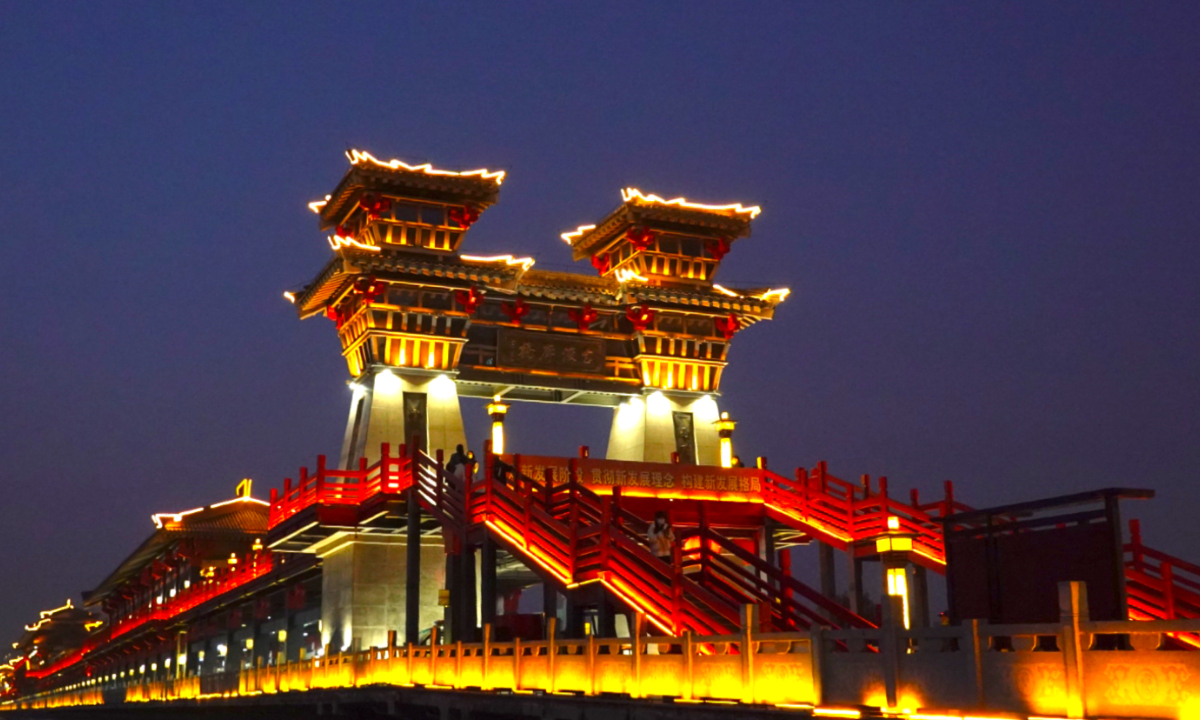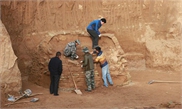
Xianyang Photo: VCG
Archaeologists in Northwest China's Shaanxi Province have found 17 bridge piers and the ruins of a revetment when they were conducting a new round of excavation at the site of the Shahe ancient bridge site in Xianyang, said the Shaanxi Academy of Archaeology.
The Shahe ancient bridge site is located in the ancient channel of the Shahe River in the Qindu district, Xianyang. The site was discovered in the 1980s. During the first archaeological excavation, which ended in 1989, archaeologists found the No.1 Bridge, dating back to the Qin (221BC-206BC) and Han (206BC-AD220) dynasties, and the No.2 Bridge, dating back to the Sui (581-618) and Tang (618-907) dynasties.
The academy started a new round of excavation at the site in 2020.
Chen Aidong, who is in charge of the excavation project at the site, said they have found that the 17 wooden piers were set in three lines. The revetment was built with the kind of building components used in ancient Chinese water conservancy projects, which were made of materials such as firewood, bamboo, and wood, together with earth and stone.
The ruins of the revetment helped determine the length and range of the No. 1 Bridge at the site, according to Chen.
In addition, three pieces of ironware and two antlers were found during the excavation.
Chen said that by dating six samples, including braided fabrics wrapped in silt layers in this excavation, it can be seen that the No.1 Bridge was built in the Qin and Han dynasties, which means this bridge most likely is the Fengshui Bridge build in the Western Han Dynasty (206BC-AD25).
It is speculated that the bridge may have been built to cater to the transportation needs of emperors for hunting and traveling, Chen said.
Xianyang is an ancient capital with a long history. It was part of the capital city during the Western Zhou Dynasty (1046BC-771BC), and was made the capital of the state of Qin in 350 BC during the Warring States Period (475BC-221BC) before becoming the capital of the Qin Dynasty.

